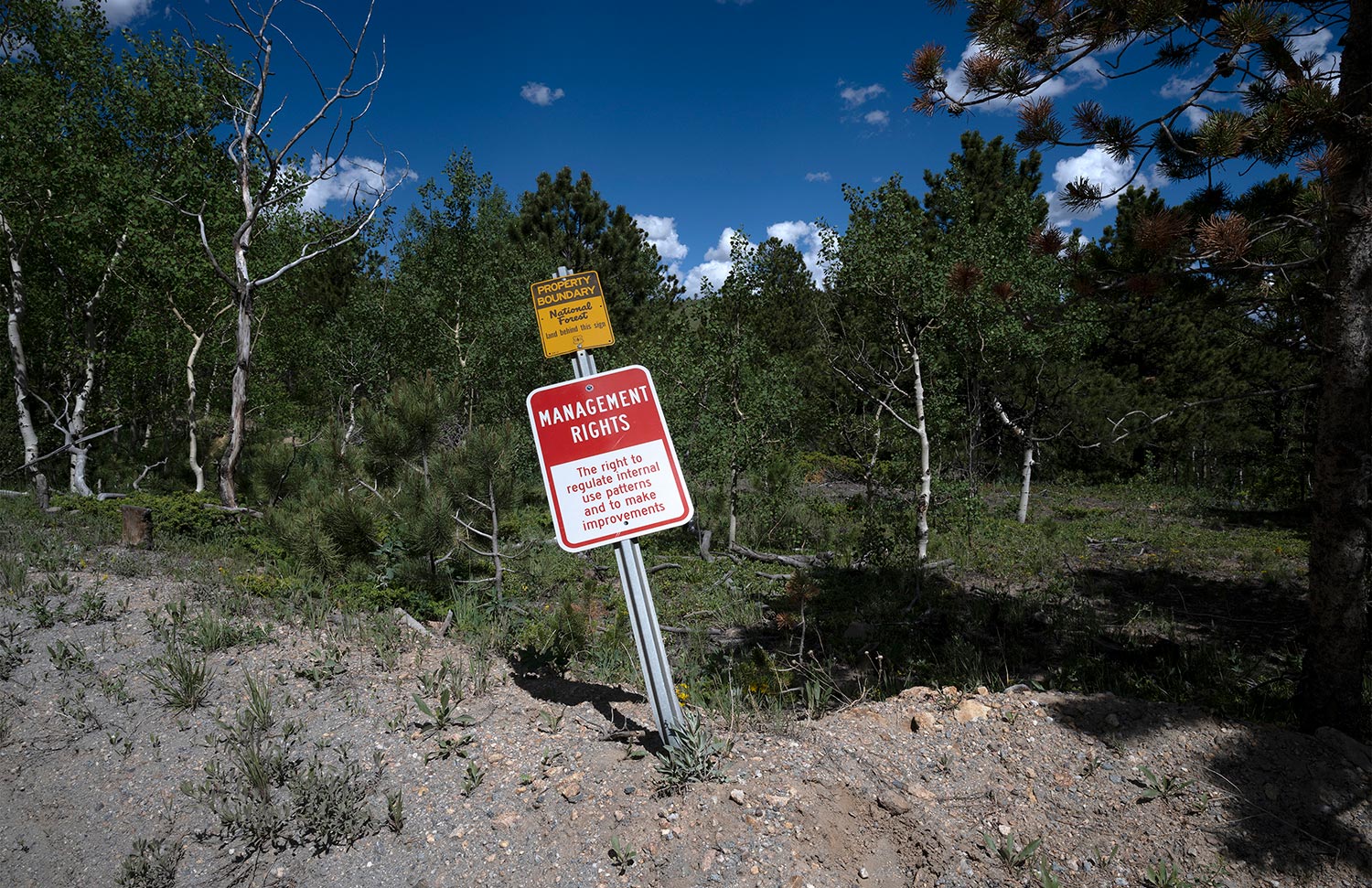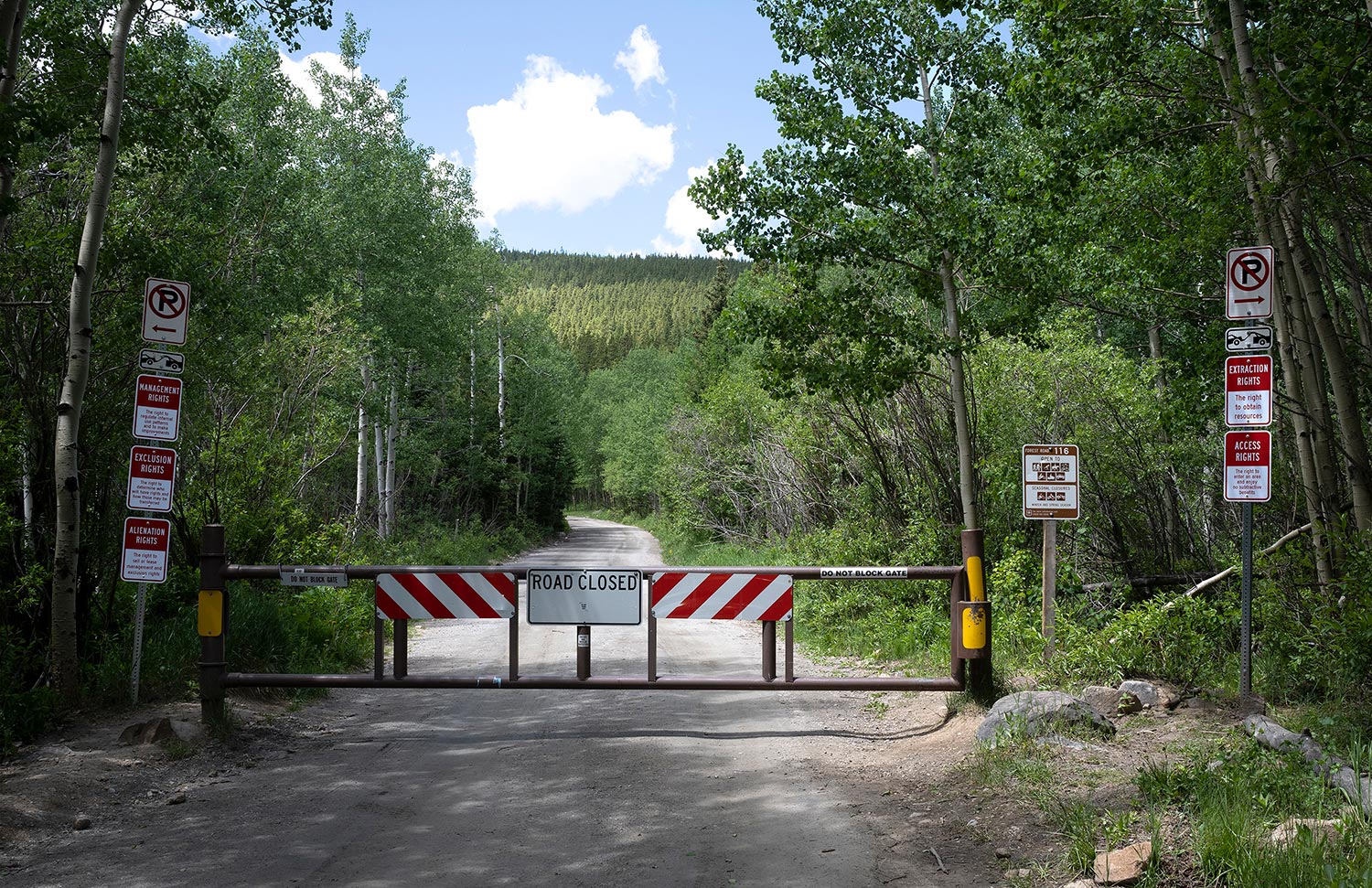
Property Rights
2020
screen-printed aluminum signs installed throughout the Roosevelt National Forest
In The Wilderness Movement and the National Forests (1988), my dad wrote about Aldo Leopold, a forest supervisor for Carson National Forest and early environmental advocate who would lay the groundwork for wilderness movement, “Wilderness, (Leopold) felt, was the forge upon which the American national character had been created, and loss of wilderness regions deprived the country of a source of renewing this heritage.” Romantic visions of the American West include images of vast landscapes and “uninhabited” places. Much of that land is public land, administered by the Forest Service, Bureau of Land Management, National Fish and Wildlife Service, Department of Defense, or National Park Service, agencies that determine the conditions for access and use. The wilderness movement highlighted the competing interests of ranchers, miners, foresters, and environmentalists–often erasing Indigenous peoples–and each coalition’s ideas of the role of public land.
Since moving to Colorado, I’ve thought often about how complicated the image of the American West is. Public land is both a touchstone for the construction of that image as well as fuse for its destabilization. At one end is John Muir’s exaltation of the grandeur of nature (and the omission of Indigenous peoples from that land) and at the other end are the Bundy family standoffs on BLM land in Nevada and the National Wildlife Refuge in Oregon. Property Rights is my exploration of how that image of public land and the American West is built, maintained, accessed, controlled, and delineated.
